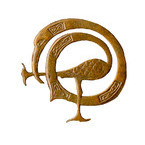ISO 100 on M10
-
Recently Browsing 0 members
- No registered users viewing this page.
-
Similar Content
-
- 4 replies
- 1,129 views
-
SL3 and ISO 200
By Dr. G,
- 9 replies
- 573 views
-
- 11 replies
- 975 views
-
- 7 replies
- 360 views
-
- 175 replies
- 44,156 views
-




Recommended Posts
Join the conversation
You can post now and register later. If you have an account, sign in now to post with your account.
Note: Your post will require moderator approval before it will be visible.